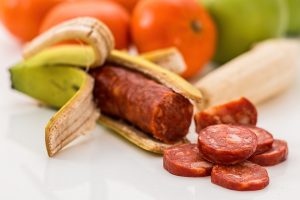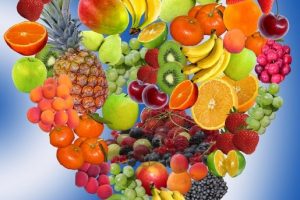Read “Fruit and Humans“ in my new website:
Give Fruit a Chance
Fruits are likely to be as ancient as humans, perhaps more. Some horticulturists suspect that bananas were earth’s first fruit. Some of the earliest written records of bananas date back to Alexander the Great, and his conquest of India, where bananas were “discovered” in 327 B.C. (1) Beyond those estimates we can’t explain with certainty where fruit came from, or how it evolved. We do know that humans have affected their production over the years, but know little about their true origins.
Over the past few thousands years, farmers have selected different traits when breeding plants, leading to new generations of larger, sweeter, and juicier fruits. These approaches were developed and passed on, leading to the highly technological, modern practices of creating Genetically Modified Organisms. GMOs are created by mixing genes from different organisms (such as bacteria) to grow plants with certain desired traits, such as resistance to pests.
Over the years, most fruit species have gone through drastic transformations, some to the point of being unrecognizable. Australian chemistry teacher, James Kennedy, became interested in the topic, and put together a series of info-graphics showing how different fruits have changed over time.
For example, peaches in 4,000 B.C. were about 25 mm long in diameter, the modern peach is about 100 mm long. In the year 3,000 B.C., watermelons were estimated to be 60 mm long in diameter, these days you can find some longer than a foot. Corn has also gone through massive growth, from about 19 mm in 7,000 B.C. to 190 mm in present days.
Many people believe that the nutrition in fruit has diminished due to the modifications it has gone through. Experts deduct that an increase in size is likely to have reduced the amount of nutrition per volume. This theory also applies to vegetables such as broccoli and carrots.
The global spread of GMOs have raised concerns on the effects of altering food genetically. Conversations about food cultivation and consumption are more relevant than ever.
Thank you for reading!
Please donate to help us publish this book.
PayPal: trevesbruno@gmail.com
Venmo: @Bruno-Treves
Sources:



